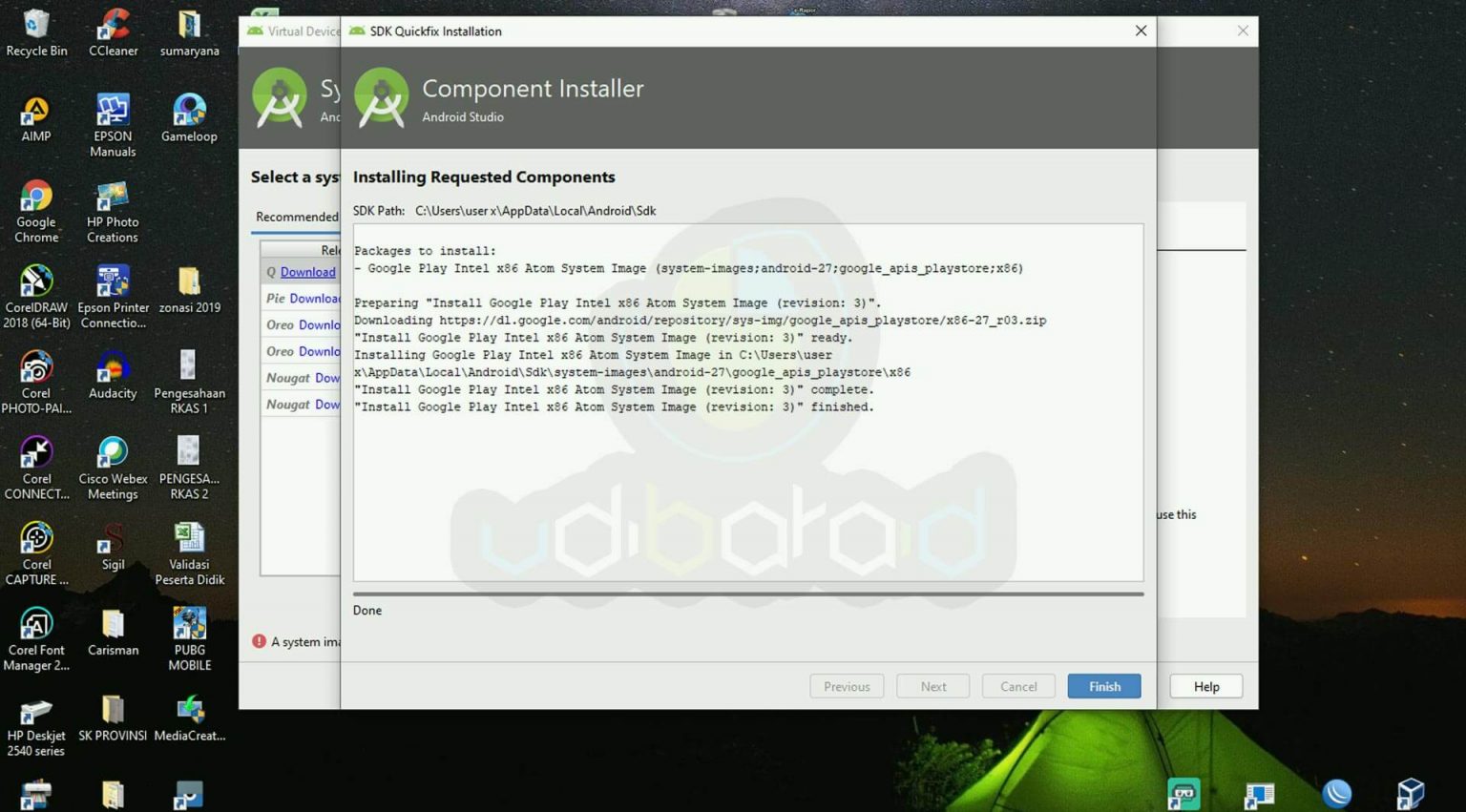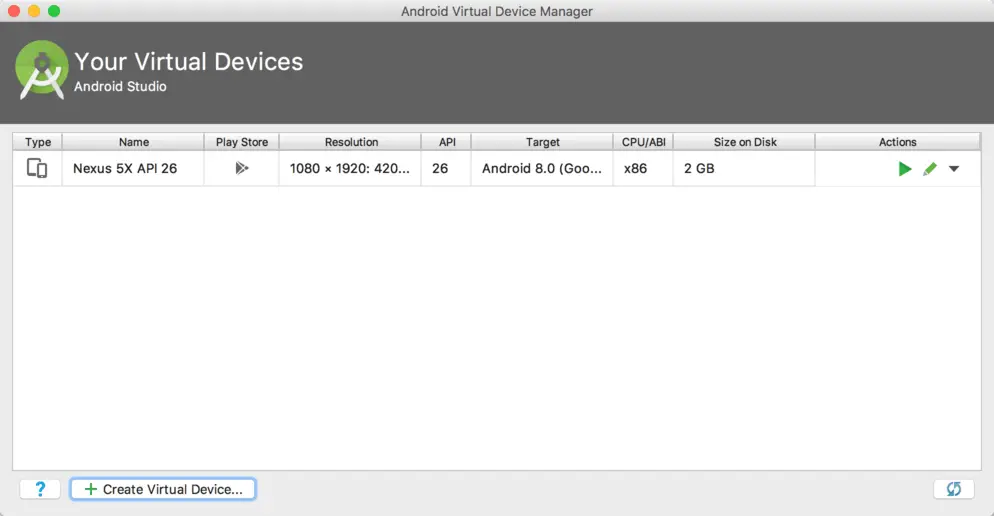

New AVDs are created and managed using the Android Virtual Device Manager, which may be used either in command-line mode or with a more user-friendly graphical user interface.

Figure 4-1, for example, shows an AVD session configured to emulate the Google Nexus 5X model. When launched, an AVD will appear as a window containing an emulated Android device environment. Check the online developer documentation for your device to find out if emulator definitions are available for download and installation into the AVD environment. Additional templates may be loaded or custom configurations created to match any physical Android device by specifying properties such as processor type, memory capacity and the size and pixel density of the screen.

As part of the standard Android Studio installation, a number of emulator templates are installed allowing AVDs to be configured for a range of different devices. An AVD may be configured to emulate a variety of hardware features including options such as screen size, memory capacity and the presence or otherwise of features such as a camera, GPS navigation support or an accelerometer. Here you can do customization to AVD which you are creating as per your requirement.AVDs are essentially emulators that allow Android applications to be tested without the necessity to install the application on a physical Android based device. Step 5: After that Enter the AVD Name in Android Virtual Device and Click on Finish button. So, we can go with the Marshmallow SDK Version. Here we have only Marshmallow SDK Version. If you have various SDK Versions like Kitkat, Lolipop and Marshmallow etc in your SDK then you can select one of them. Step 4: After that choose the SDK Version and Click on Next button. If your computer has low RAM then prefer to choose less resolution device. Important Note: Choose the pixels resolution according to your requirements as it will take huge RAM in large pixels resolution device. Step 3: After that choose the Category, phone size and choose the pixels according to your requirement. After that Click on Create Virtual Device.

Step 2: Android Virtual Device Manager will be opened. Another way to open the AVD Manager directly by the AVD icon in the Tool bar. Step 1: Firstly, Select Tools > Android > AVD Manager > Click the AVD Manager icon in the toolbar. How to Create Virtual Device/Emulator in Android Studio: It is also called Emulator.īelow are the steps to create New AVD (Android Virtual Device) In Emulator: AVD Manager is basically a tool which you can use to create and manage AVD (Android Virtual Devices) for the Android Emulator. We start AVD in Emulator to test our Android App. How to Create New AVD (Virtual Device) In Emulator in Android Studio


 0 kommentar(er)
0 kommentar(er)
